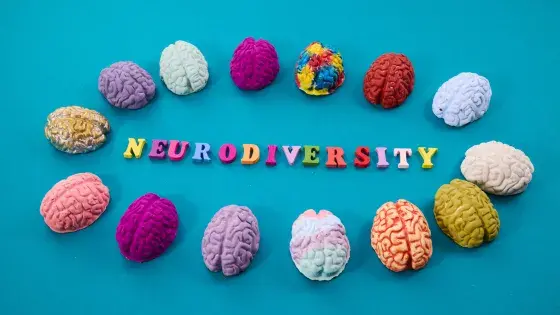This year, Global Accessibility Awareness Day (GAAD) is focussed on raising awareness of digital and technological inclusion of disabled individuals in business.
Their guidance for how organisations can participate includes improving accessibility of social media, developing accessible digital experiences, hearing from disabled voices and implementing accessible software and technology.
Through our work at Health Partners, particularly in the Neurodiversity Team, we provide advice, guidance and support on the implementation of accessible and assistive technology for many of our clients.
Assistive technology has come a long way in enhancing the lives of individuals with disabilities, health conditions and neurodivergence. With the integration of artificial intelligence (AI) tools, these technologies are becoming even more powerful, enabling greater accessibility and independence.
For GAAD we explore how AI is revolutionising assistive technology and what Health Partners considers when recommending products and services that use AI.
Ensuring Inclusive Employment for All
In the context of inclusive employment, AI-driven assistive technologies can perform a strong role in supporting employees with diverse needs:
- Dictation Technology: This technology allows employees to write without need to interact with a keyboard. High-quality AI, including Natural Language Processing (NLP) and machine learning algorithms, improves the accuracy of speech recognition and word predictability. Employees with physical or ergonomic challenges often benefit from the use of dictation tools, as do neurodivergent employees, particularly those who benefit from spelling and grammar support when writing – through speech, these concerns are alleviated.
- Predictive Text and Communication Apps: AI algorithms predict words and phrases, making communication easier for those with communication challenges. Communication Support/Transcription applications like Jamworks and Caption. Ed, and writing programmes like Lightkey, use AI to support typing and effective notetaking. Employees can express themselves more effectively, collaborate better with colleagues and participate more capably in meetings.
- Cognitive Support Tools: AI-powered tools can help employees with management of daily tasks, reminders and schedules. These tools can provide step-by-step instructions and visual cues, ensuring that employees stay organised and productive.
Potential Challenges
While AI holds great potential for enhancing accessibility, responsible implementation and ongoing oversight are necessary to address these challenges and ensure positive outcomes for users with disabilities. We identify some considerations below.
- Loss of User Voice: When AI generates content on behalf of users, there’s a risk of losing their unique voice and personal expression. This generic output can dilute the individuality of the user’s communication.
- Errors and Hallucinations: AI systems can make mistakes, misinterpret context or generate nonsensical content. Users relying on AI for communication or decision-making may encounter errors or even ‘hallucinations’ (false responses provided by an AI), impacting their overall experience.
- Bias and Fairness: In assistive technology, biased recommendations or responses could inadvertently harm users or reinforce existing inequalities.
- Ethical Design and Transparency: Transparency about how AI operates, its limitations and potential risks is essential for informed user consent. Many assistive technology tools now advertise their use of AI, though few describe exactly how AI functions within them. Different developers also use the term ‘AI’ to mean multiple things. Many users may now expect functions of a ‘General Intelligence’ tool, such as ChatGPT, only to find that a very ‘narrow’ AI is being utilised by that software.
What Should Organisations Consider?
When recommending AI-driven assistive technologies for inclusive employment, organisations should keep the following in mind:
- Customisation: Assistive technologies should be customisable to meet individual needs; AI tools can often allow for personalised adjustments based on employee preferences;
- User Training: Proper training is essential for effective use – organisations should recommend provision of training and ongoing support to maximise the benefits of AI-powered tools, as should be the case for any new technology or software provided to an employee;
- Ethical Considerations: Businesses must address privacy, data security and ethical implications when integrating AI-powered assistive technology into their IT ecosystems – we can support with this at Health Partners by ensuring that products are properly by our experts before making recommendations, thereby helping to develop confidence.
At Health Partners, we remain committed to providing the best outcomes for our clients and their employees and that we keep abreast of the latest advancements in this ever-evolving space. If you want to speak with one of our team members about Workplace Adjustments for your business, we would love to discuss our services with you: wpateam@healthpartners.uk.com

